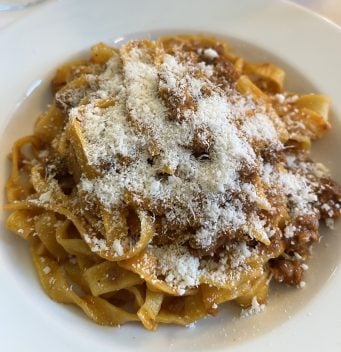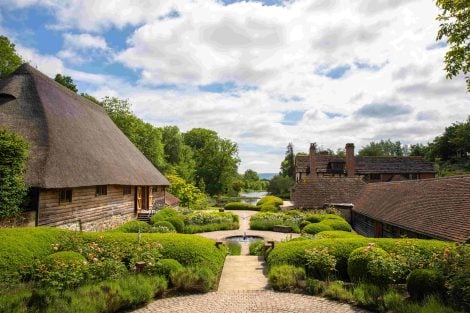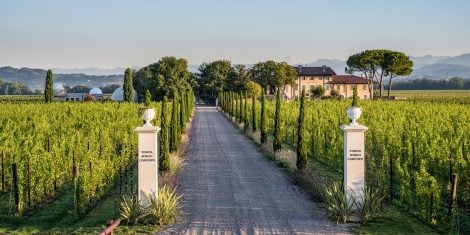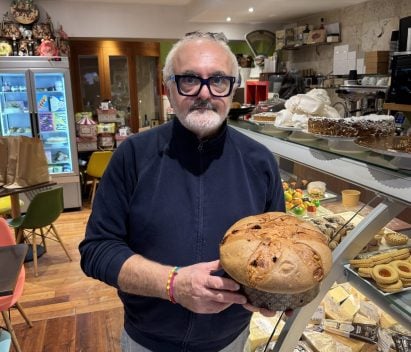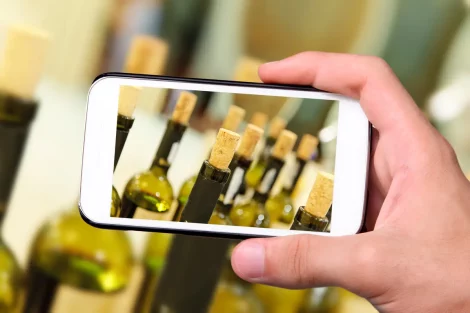Summer = holidays. It’s the equation that repeats every year around this time. Once upon a time, the options were essentially two—sea or mountains—but today the possibilities are far more varied. There’s astronomical tourism, “coolcations” in search of cooler climates. There’s “noctourism” and “quietcations” for holidays lived in silence and at a slow pace. And now there’s saliturismo: an experiential journey focused on sea salt.
SEI Saline Ettore e Infersa, located within the Riserva Naturale Orientata Isole dello Stagnone di Marsala, along Sicily’s western coastline, is the most prominent example of this new way of travelling. It was the first, and remains the best, to truly grasp the potential of marine white gold and its natural environment. It is here that the neologism saliturismo was born.
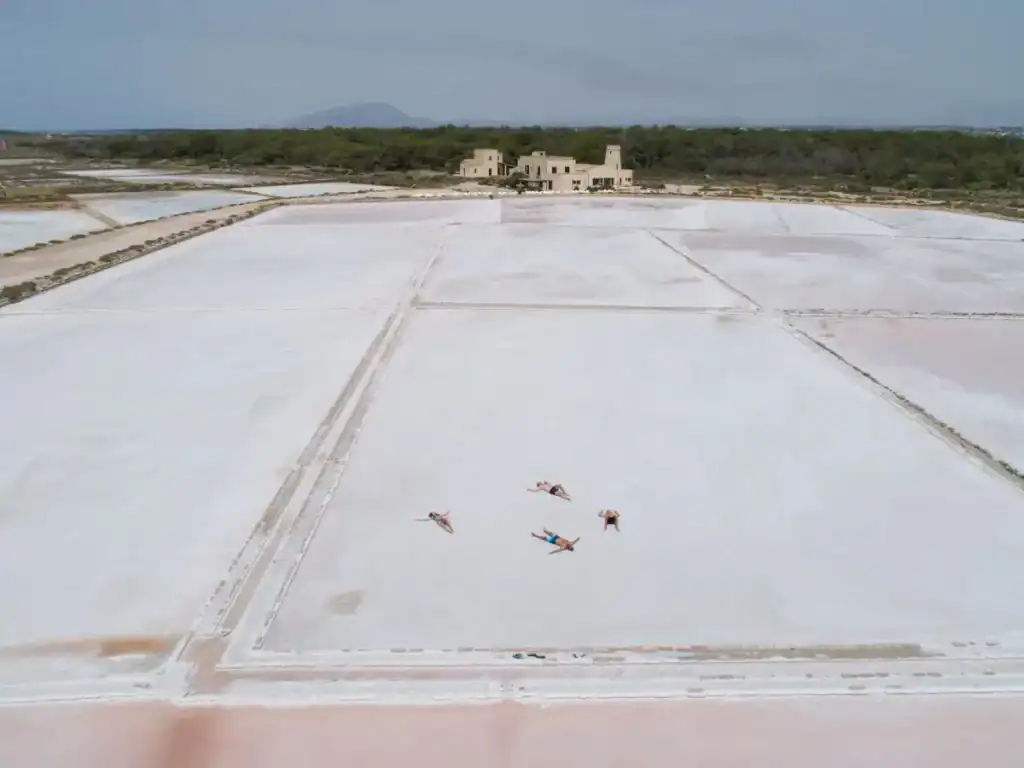
From salt production site to experiential tourism destination focused on white gold
Yet 40 years ago, this little paradise in southern Italy looked very different. The salt pans were operational and beautiful, yes—with great tourism potential—but had an abandoned, wounded sort of beauty. Their potential was recognised by Antonio D’Alì Staiti, president of Sosalt (a salt-producing company along the coast between Trapani and Marsala) from the 1980s to 2011, who bet on reviving them with a tourism-oriented approach.
It all began with the restoration of the majestic windmill, the heart of the Ettore and Infersa salt pans, marking the start of this beautiful story of Italian entrepreneurship tied to salt.
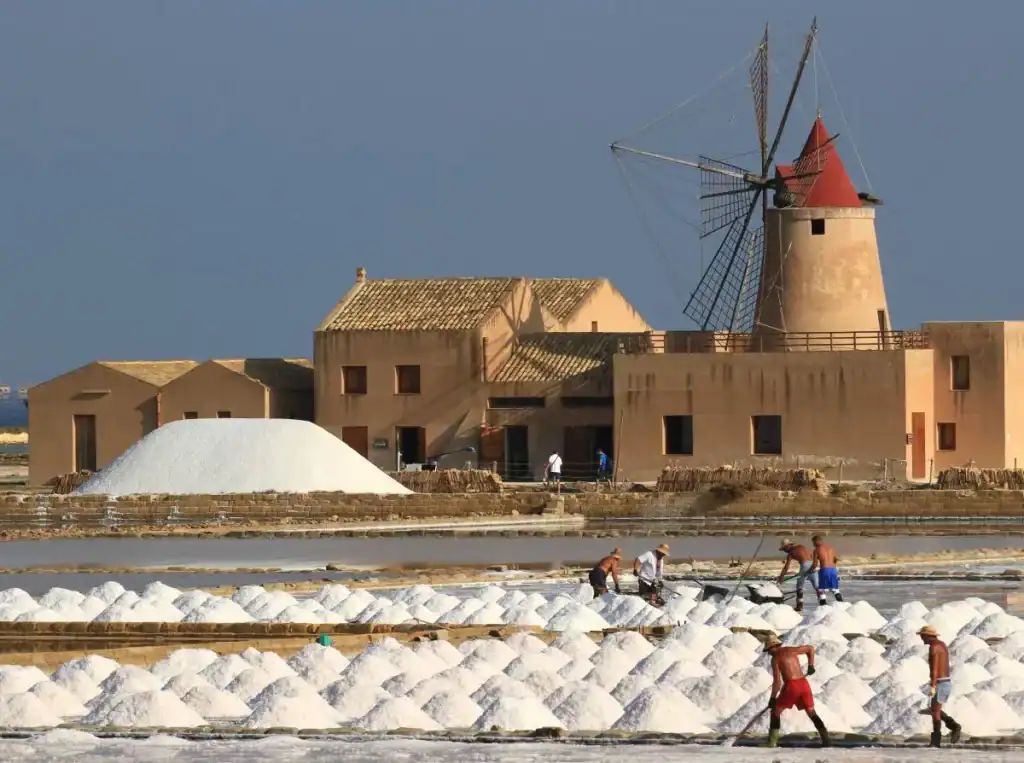
The birth of SEI and of Saliturismo
Since 1996, the year the grand windmill—freshly restored both structurally and mechanically—was opened to the public (thanks in part to one of the last master shipwrights, who recreated the wooden cogwheels connected to the millstones), the Ettore and Infersa salt pans have grown immensely.
Around and within them, the Mamma Caura refreshment point and the Salt Resort have been created. And the name has changed. Since 2020, they’ve been called SEI. SEI is an acronym for Ettore e Infersa. Sei also means “six” in Italian—like the six blades of the windmill. And sei is also the second person singular of the verb to be, transferred to the visitor, who becomes the protagonist of various salt-based experiences.
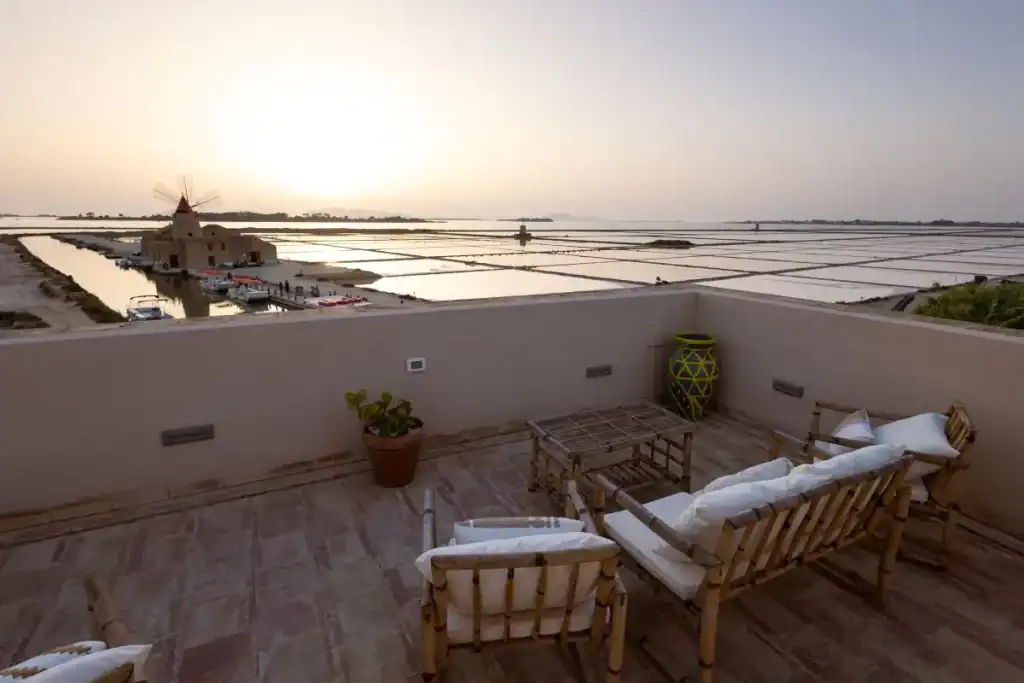
Mamma Caura
Mamma Caura (its name inspired by the gypsum-based sediment that collects at the bottom of evaporating basins, called caure) is a 1930s customs house where salt taxes were once collected. In the 1990s, it was converted into a hospitality and dining facility. In 2021, it was fully renovated and transformed into a sunset bar overlooking the salt pans and the ancient windmill. It now features an aperitivo and bistro area on the ground floor, a restaurant on the first floor, and a rooftop terrace on the second floor offering panoramic views and a space for meditative pauses.
Mamma Caura is the perfect spot for a cocktail (try the MarSale), a glass of bubbly, or traditional island dishes—especially magical in the evening as the sun sets over the Strait of Sicily.
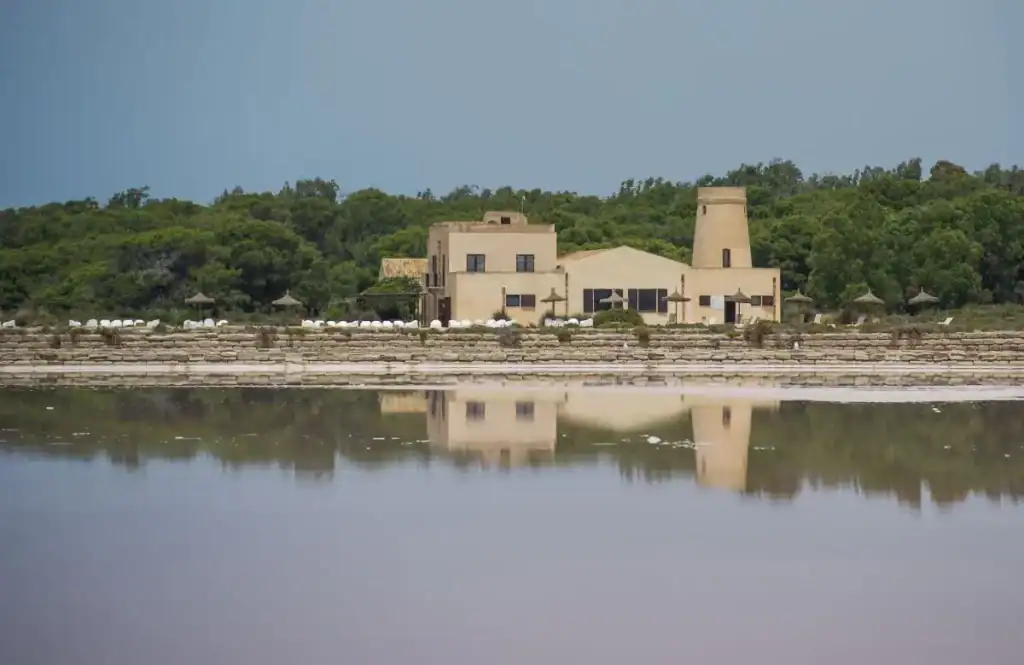
Salt resort
One can completely immerse in the world of salt and wild Mediterranean nature by staying at the Salt Resort, located on the Isola Grande (or Lunga) of the Stagnone lagoon—an eco-friendly getaway far from the crowds. Opened in 2005, it’s a small hotel with just three rooms and en-suite bathrooms, housed in restored historic buildings.
“There’s also a salt pan at the Salt Resort that works perfectly from a hydraulic standpoint, but here we don’t harvest salt—we cultivate well-being,” says Adele with a smile. The water, which flows in from the lagoon and moves through a long circuit into the basins, contains salt levels up to eight times higher than that of the sea. It’s thalassotherapy in direct contact with nature.
Salt workers for a day
For a few hours, visitors physically step into the process of producing white gold. Boots are donned, basins are entered, traditional tools are taken up, and salt is “harvested” alongside real salt workers.
“We want people to understand what a salt pan is and how salt is still harvested by hand. I don’t know how much longer that will be possible,” Adele concludes.
The 16th-Century windmill, the heart of SEI
At the centre of it all is the great 16th-century windmill, with its red conical roof, six blades, and white sails dominating the landscape. It is the main attraction of the salt pans and the cultural core of SEI’s brand of saliturismo.
In the summer months, the windmill is brought back into operation twice a week. The interior is open to visitors and features multimedia displays with touchscreens and 3D animations, helping people understand the salt pan “system” and its surrounding ecosystem.
The windmill also houses La Bottega del Sale, where visitors can not only purchase company products—including gourmet sea salts under the registered brand Il Re del Sale and Solemarevento cosmetics—but also taste different types of white gold under the guidance of “Selmeliers”. These include fior di sale, Cristalli di Salina, and Trapani PGI sea salt (the first in Italy to receive European certification), paired with various products.
SEI – Saline Ettore e Infersa – Marsala (TP)
C.da Ettore Infersa – 0923 733003 – 340 1934247 – seisaline.it

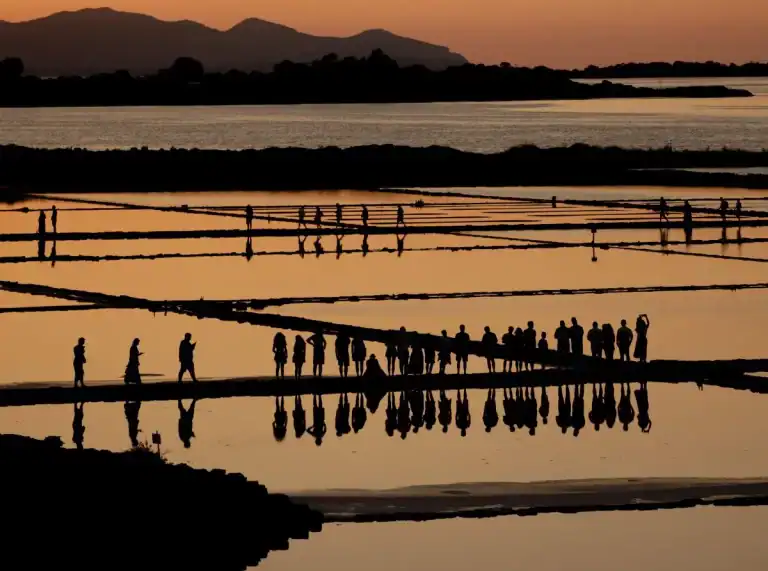
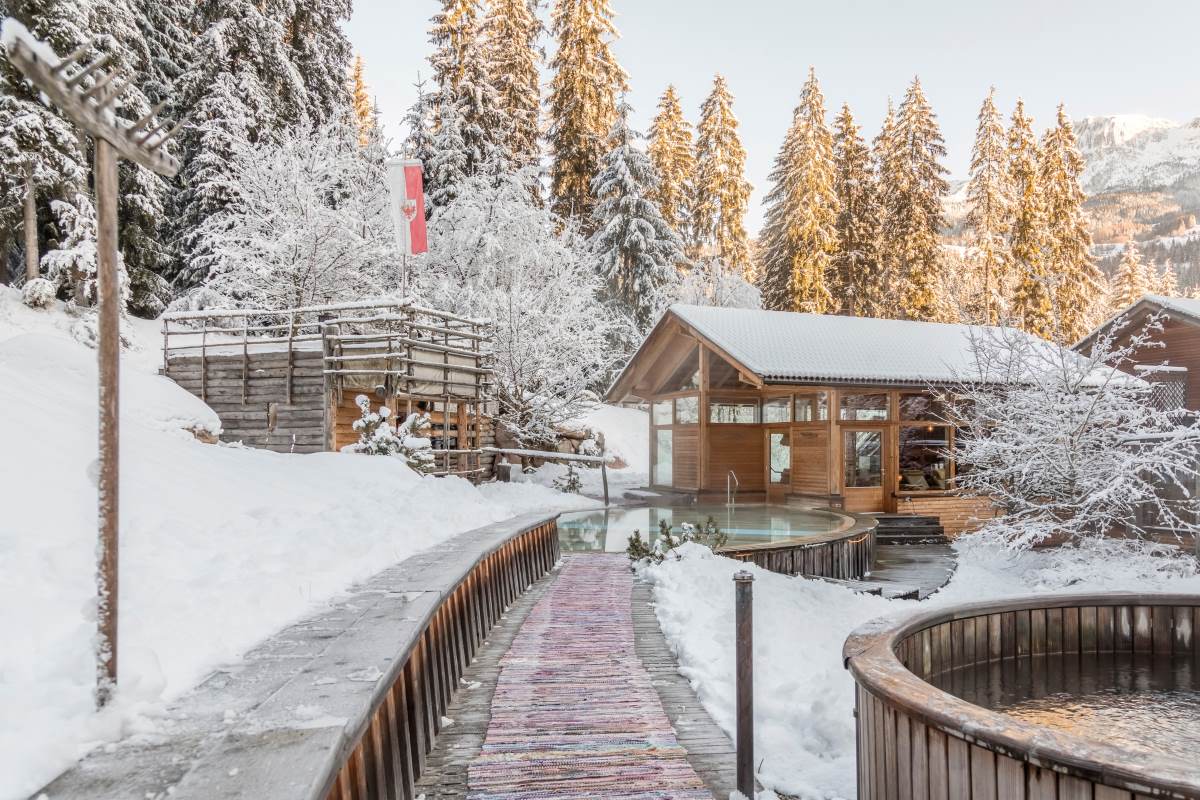 The alpine hotel where you can enjoy outstanding mountain cuisine
The alpine hotel where you can enjoy outstanding mountain cuisine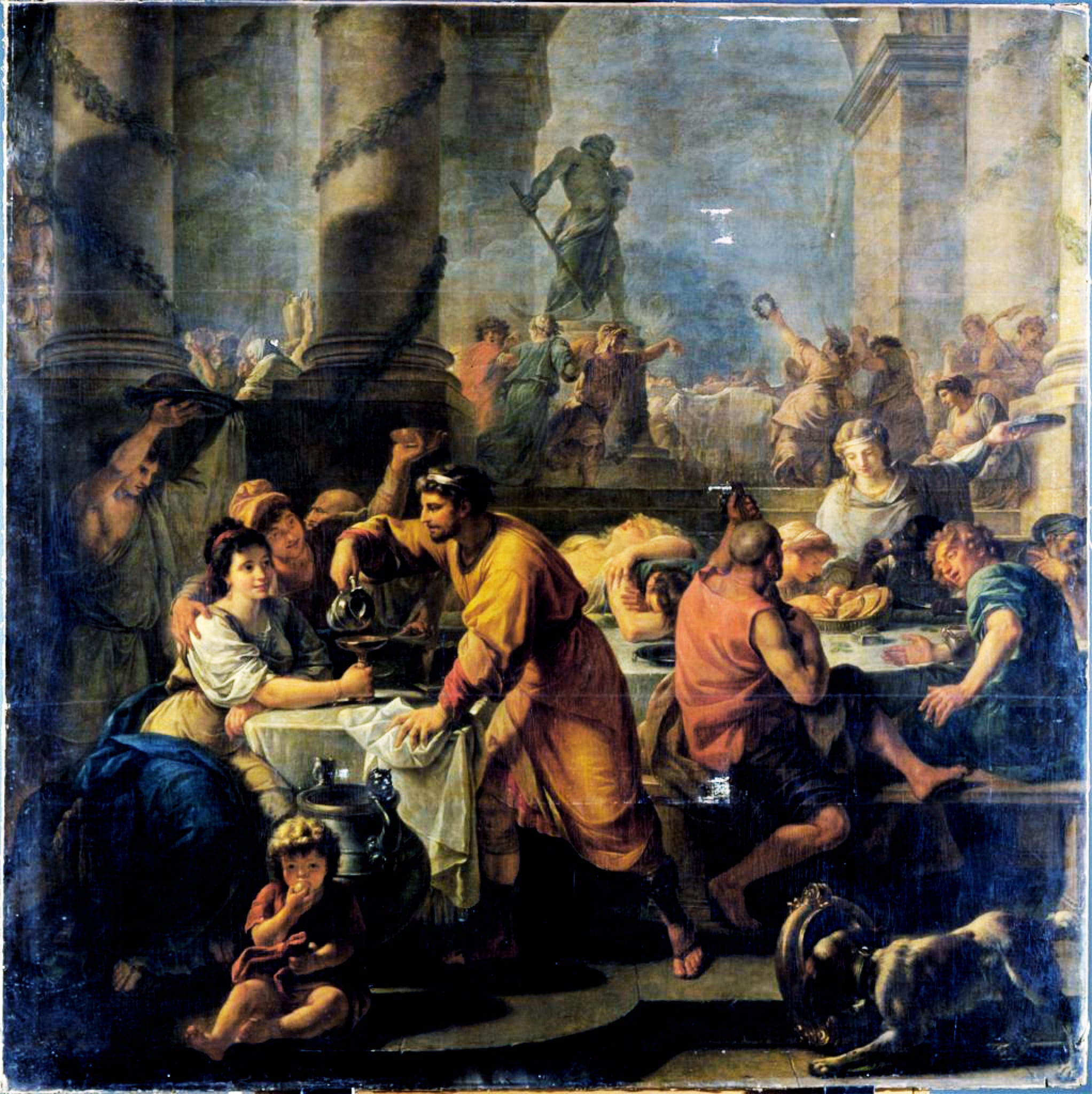 Io Saturnalia! How to celebrate the festive season like an Ancient Roman
Io Saturnalia! How to celebrate the festive season like an Ancient Roman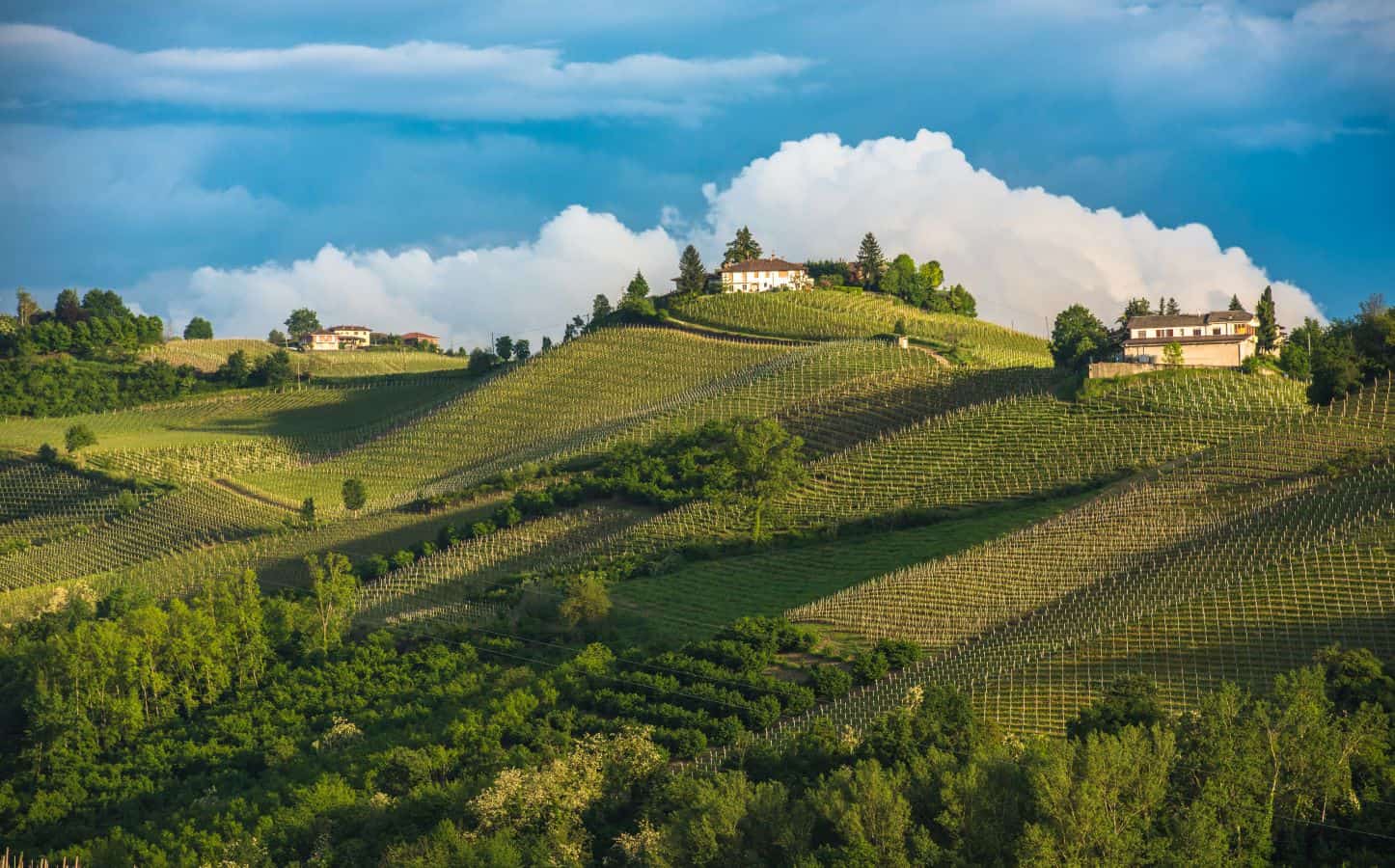 The UNESCO effect: tourism is growing, but there is a risk of losing identity
The UNESCO effect: tourism is growing, but there is a risk of losing identity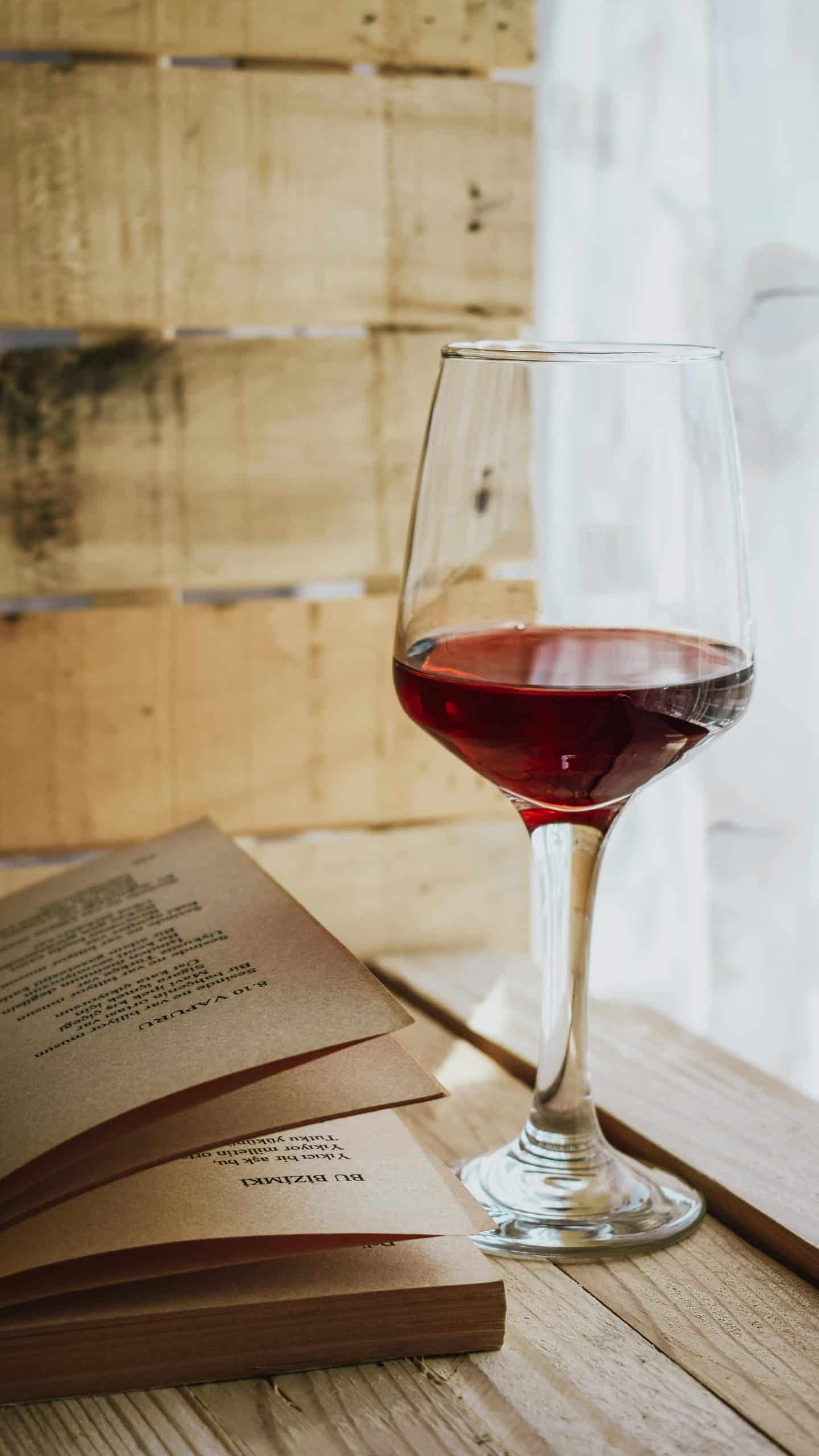 The perfect pairing? Wine and books
The perfect pairing? Wine and books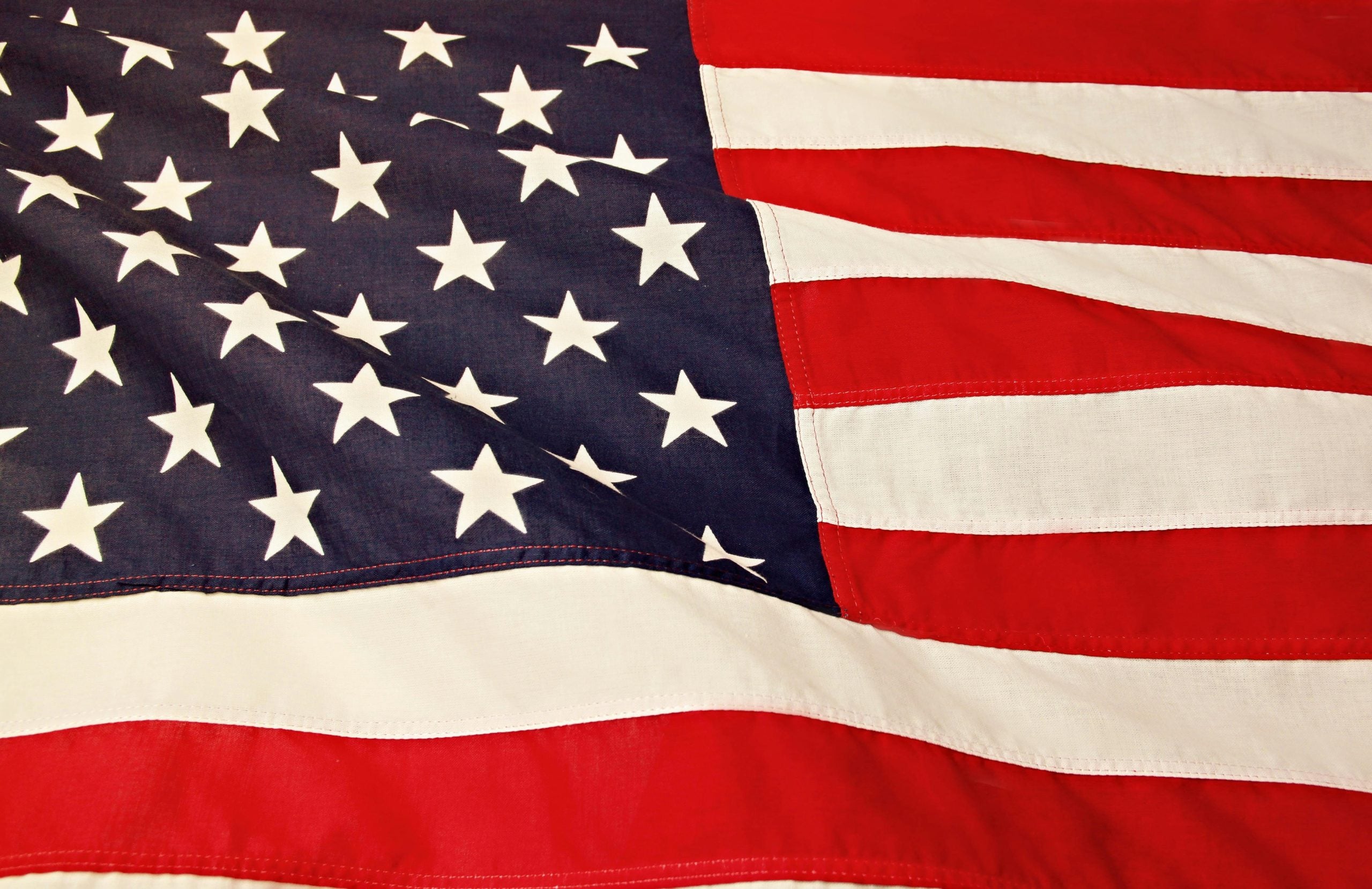 2025 was the year of Trump's tariffs – will 2026 be better for Italian wine in the US?
2025 was the year of Trump's tariffs – will 2026 be better for Italian wine in the US?